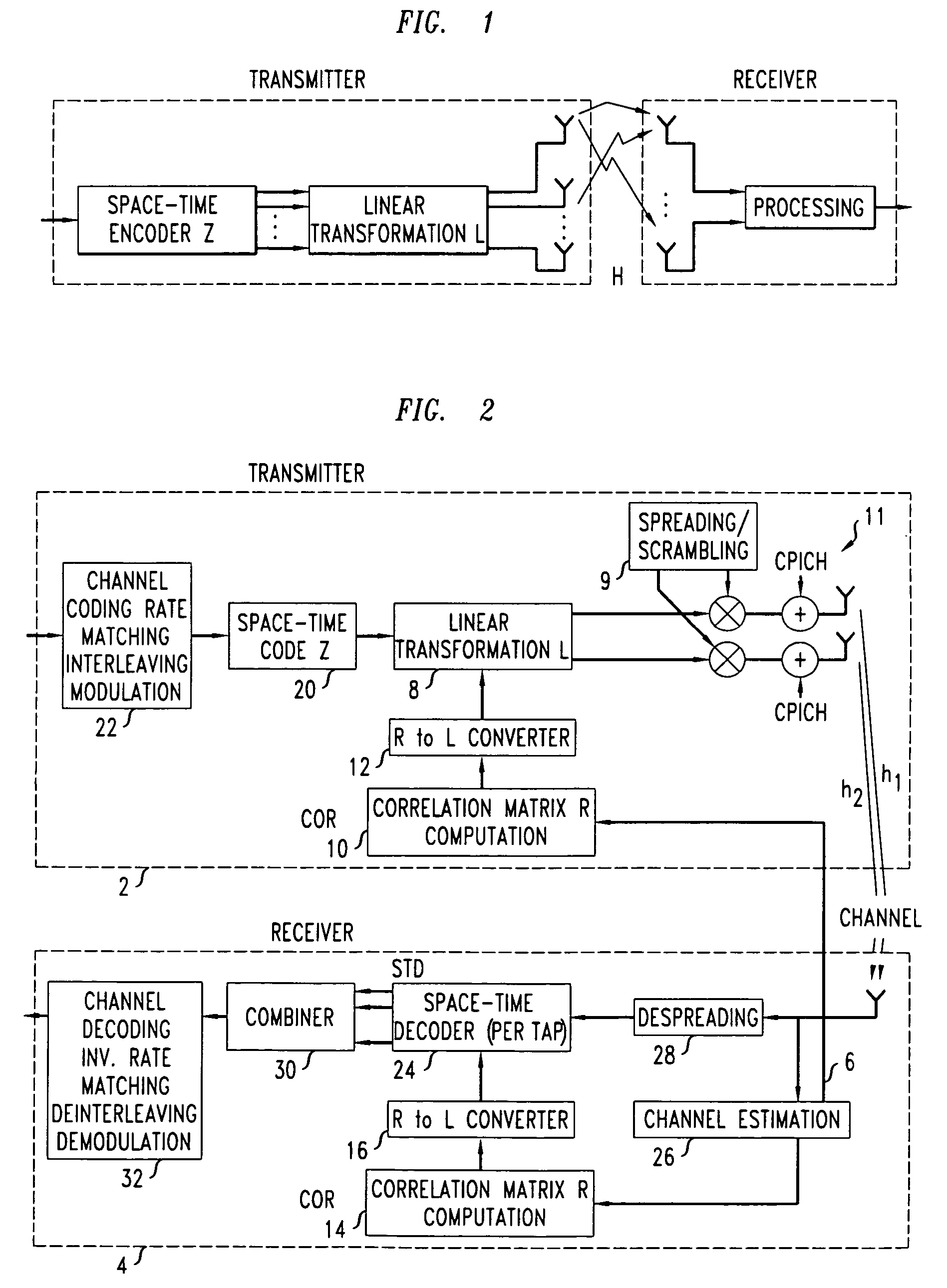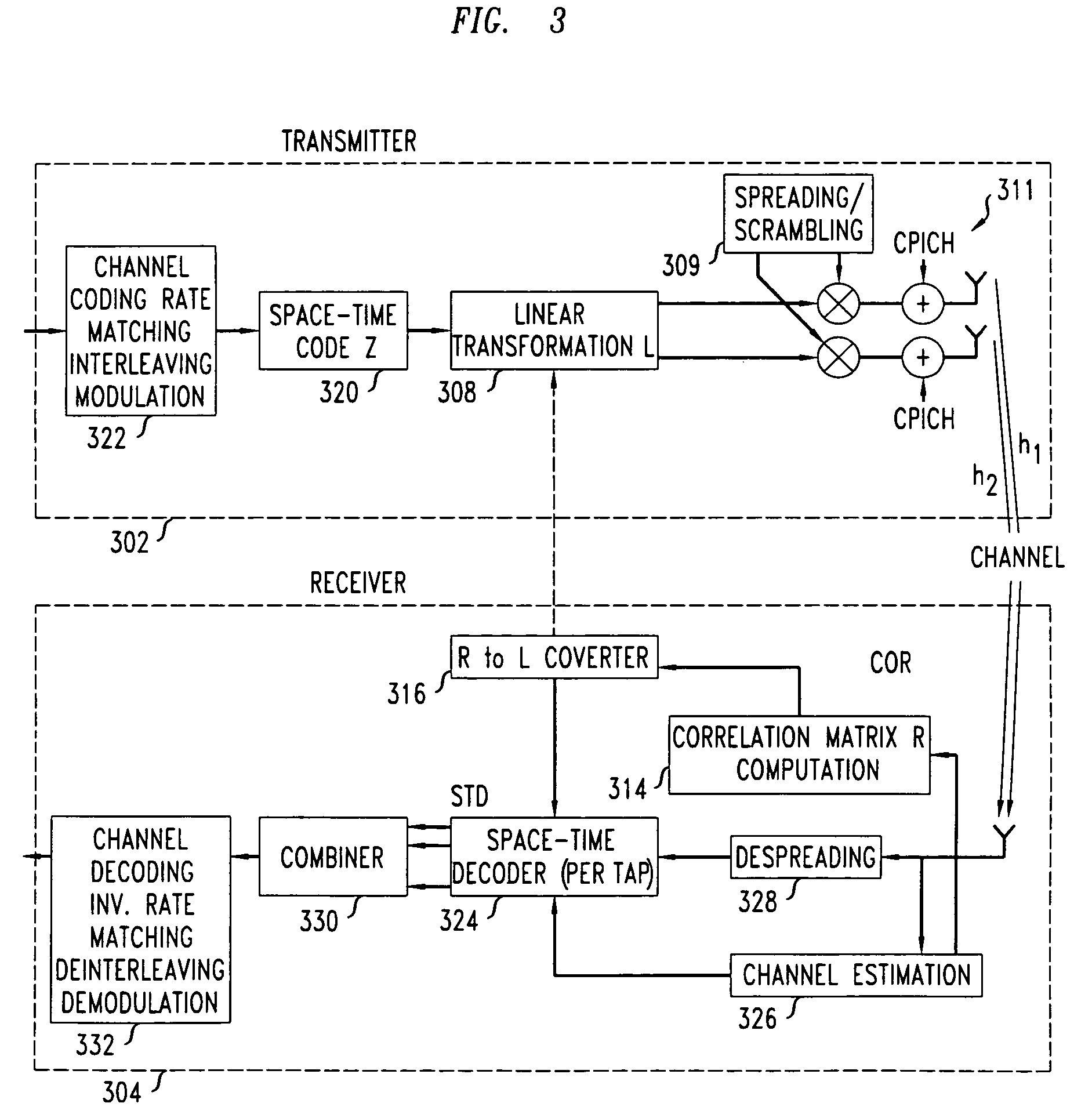Method of compensating for correlation between multiple antennas
a multi-antenna and correlation technology, applied in the field of wireless communication, can solve the problems of reducing channel capacity and system performance in multiple-input multiple-out, and the tendency of antenna correlation to degrade the performance of mimo systems,
- Summary
- Abstract
- Description
- Claims
- Application Information
AI Technical Summary
Benefits of technology
Problems solved by technology
Method used
Image
Examples
Embodiment Construction
[0015]For ease of understanding a more general description is presented, followed by an explanation of implementation aspects in a mobile telecommunications network, such as a Universal Mobile Telecommunications System (“UMTS”) standards based type. It should be noted that the present invention has applications not only in UMTS, but also, by way of example and without limitation, in communication systems such as, for example, code division multiple access (“CDMA”) and wideband code division multiple access (“W-CDMA”).
[0016]MIMO systems for use in UMTS, for example, typically involve space-time block encoding. The encoding and transmission sequence for this scheme may be as follows: at a first transmission time instant t1 symbols x1 and x2 may be transmitted from antennas 1 and 2 respectively and at the next transmission instant t2 symbols −x2* and x1* may be transmitted from antennas 1 and 2 respectively, where * denotes complex conjugate. This transmission sequence Z can be represe...
PUM
 Login to View More
Login to View More Abstract
Description
Claims
Application Information
 Login to View More
Login to View More - R&D
- Intellectual Property
- Life Sciences
- Materials
- Tech Scout
- Unparalleled Data Quality
- Higher Quality Content
- 60% Fewer Hallucinations
Browse by: Latest US Patents, China's latest patents, Technical Efficacy Thesaurus, Application Domain, Technology Topic, Popular Technical Reports.
© 2025 PatSnap. All rights reserved.Legal|Privacy policy|Modern Slavery Act Transparency Statement|Sitemap|About US| Contact US: help@patsnap.com



